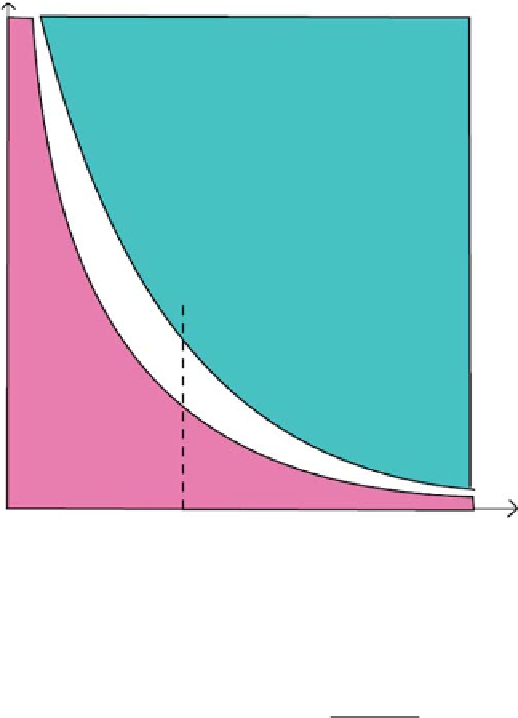Chemistry Reference
In-Depth Information
T
L
0
Fig. 5.9
Stability region (
shaded
)inthe(L;T )plane
so the steady state is globally asymptotically stable if and only if LT
¤
1.
Case 3. If N>8, then there are two real roots,
N
4
˙
p
N.N
8/
4
.LT/
1;2
D
;
(5.134)
both are positive, and reciprocals of each other. So the steady state is glob-
ally asymptotically stable if and only if either LT <.LT/
1
or LT >
.LT/
2
; whereweassumethat.LT/
1
<.LT/
2
:
The stability region in the (L;T ) plane is the shaded region shown in Fig. 5.9.
The steady state is globally asymptotically stable under the lower hyperbola and
above the upper hyperbola. The white region between the two hyperbolas shows
where the steady state is unstable. If N
D
8, then the hyperbolas coincide. In
this case global asymptotic stability occurs outside the curve of the hyperbola. In
Table 5.1 we show the values of .LT/
1
and .LT/
2
for several cases of N
8.
Consider next N
9 and a fixed value of L, and start gradually increasing the
value of T starting at a very small level. The steady state is globally asymptotically
stable until we reach the lower hyperbola, and after crossing this hyperbola the
steady state becomes unstable. Stability is regained after the upper hyperbola is

Search WWH ::

Custom Search